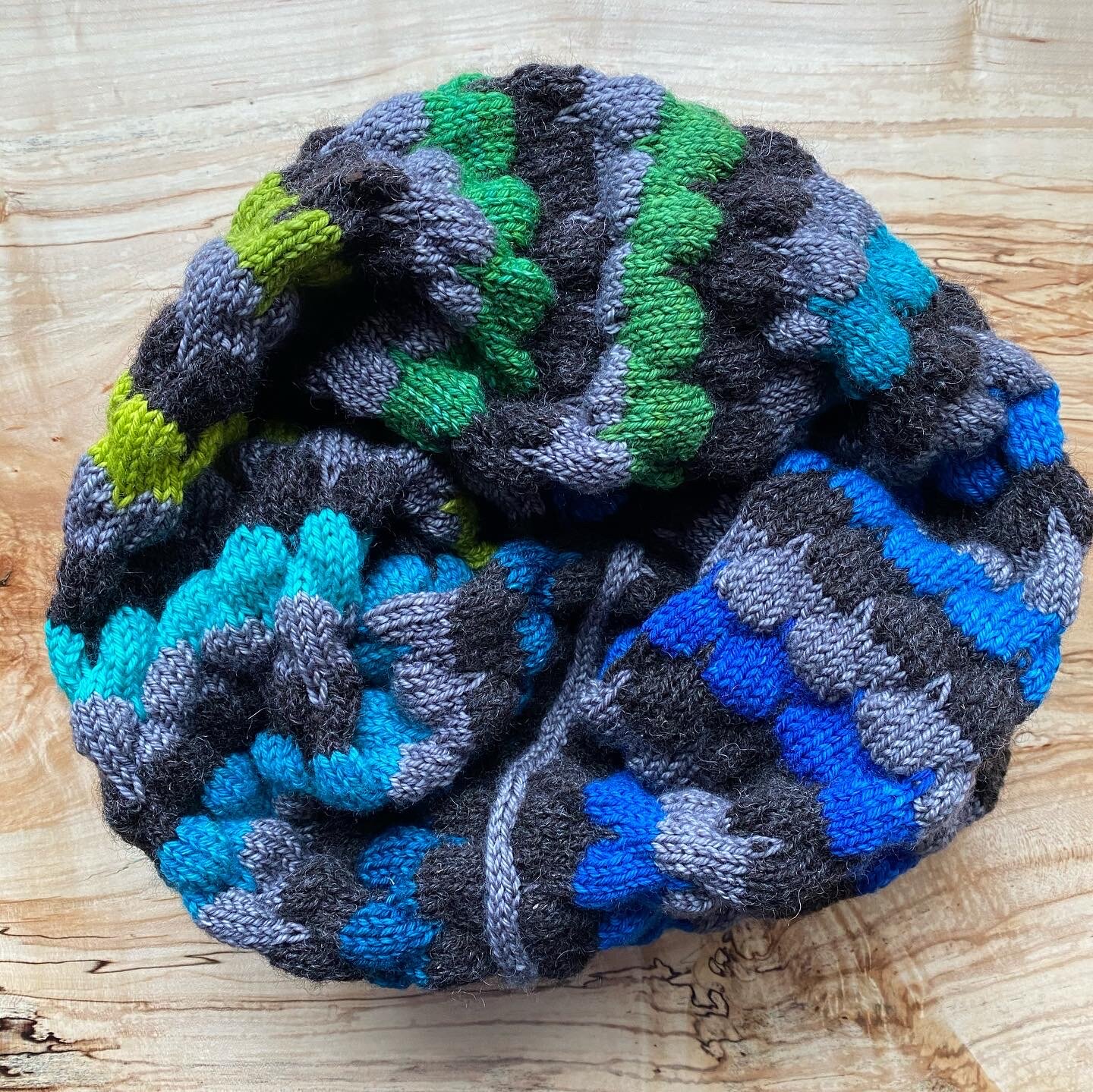January & February Roundup
It’s hard to believe we’re already at the end of February!
January
One of my first projects was knitting my first handspun-by-me project, a pair of convertible mittens. I tried to do these two-at-a-time at first, but I ended up ripping one out and just knitting one after the other — and I think the colors turned out better this way. I love the way they match but also don’t match, and the way this yarn plied up into that slow color change that I love so much.
I also spun my first project on my new Kromski Minstrel, using some Malabrigo Nube. I have many more colors of Nube in my growing fiber stash, so you’ll see lots more coming up, too.
I finally finished (1.5 years later) my tweedy, cabley, wonderful sweater out of the most perfect pumpkin orange from the Farmer’s Daughter Fibers. Do I have pictures of this one yet? Nope, in fact I haven’t even blocked it yet, because no one can tell on Zoom that the bottom edge of this sweater is kind of squirrely. For those of you keeping track, this was the sweater I had to put on hold when my wrist started acting up, and I finally decided that I could handle picking it back up, slowly — and I could. I probably won’t ever knit another seed stitch sweater, though!
And I also made a Bubble Cowl out of a combination of Canon Hand Dyes (peacock gradient minis), Local Color Farm and Fiber Finnsheep, and Magpie Fibers. I love the way the texture of the yarn combines with the texture of the stitches, and this cowl is sooo warm and cozy.
February
One of my February spins used some Hipstrings that my brother bought me for Christmas, and I’m really pleased with the way it turned out. I’m not sure what I’m going to make out of it yet or whether I’ll combine it with something else, but this was a really fun spin and I find that I really enjoy spinning on a treadle machine, because it uses both my hands AND my feet.
A friend of mine posted a Musselburgh hat she had made, and I immediately knew I needed to make one, so I pulled out a skein of La Bien Aimée (that some friends brought back for me from France!) and knit this very strange-looking tube that morphed into a very nice-looking and comfortable hat.
I also spun up some more Malabrigo, this time combining two different colorways into what I’m calling Razzleberry Pie (thanks to a name from a friend who talked me through color choices). I’m currently spinning the rest of the purple to ply with a much brighter pink, and then I’ll experiment with my remainders to see what I can turn those into.
And lastly, I’m almost done knitting a Sizzle Pop out of yarn I indigo-dyed myself. This pattern is really intuitive and is definitely not as intimidating as it looked to start with, and I already know I’m going to make more of these. I love the subtle difference between the two blue shades.
I haven’t really sewn anything since I forced myself to make masks in March or April of last year, but I have been thinking (just thinking!) about pulling out some of my quilt pieces, or finally getting back to some garment sewing. We’ll see.
































